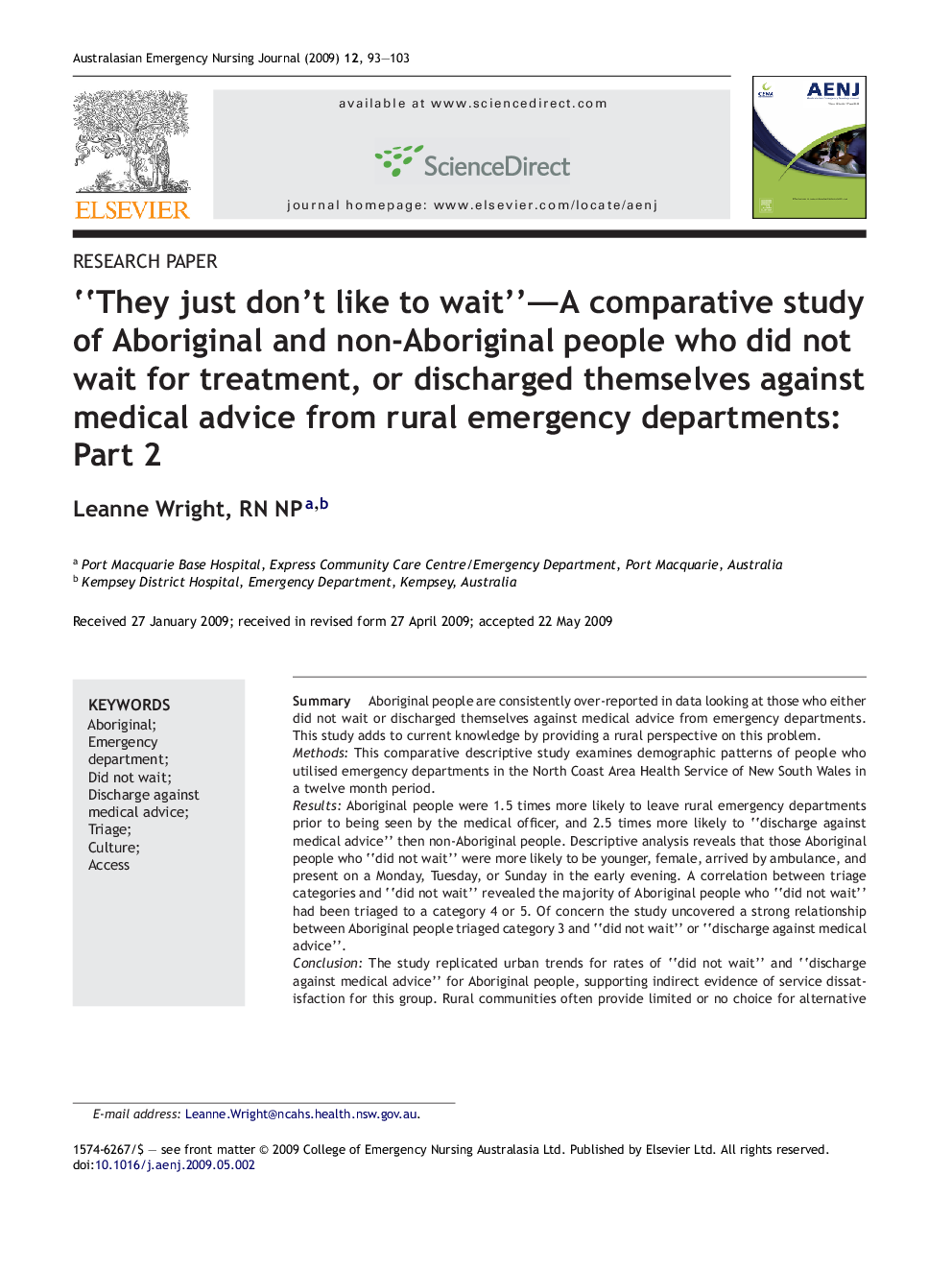| Article ID | Journal | Published Year | Pages | File Type |
|---|---|---|---|---|
| 2606149 | Australasian Emergency Nursing Journal | 2009 | 11 Pages |
SummaryAboriginal people are consistently over-reported in data looking at those who either did not wait or discharged themselves against medical advice from emergency departments. This study adds to current knowledge by providing a rural perspective on this problem.MethodsThis comparative descriptive study examines demographic patterns of people who utilised emergency departments in the North Coast Area Health Service of New South Wales in a twelve month period.ResultsAboriginal people were 1.5 times more likely to leave rural emergency departments prior to being seen by the medical officer, and 2.5 times more likely to “discharge against medical advice” then non-Aboriginal people. Descriptive analysis reveals that those Aboriginal people who “did not wait” were more likely to be younger, female, arrived by ambulance, and present on a Monday, Tuesday, or Sunday in the early evening. A correlation between triage categories and “did not wait” revealed the majority of Aboriginal people who “did not wait” had been triaged to a category 4 or 5. Of concern the study uncovered a strong relationship between Aboriginal people triaged category 3 and “did not wait” or “discharge against medical advice”.ConclusionThe study replicated urban trends for rates of “did not wait” and “discharge against medical advice” for Aboriginal people, supporting indirect evidence of service dissatisfaction for this group. Rural communities often provide limited or no choice for alternative after-hours health care arrangements, leading to potential adverse outcomes for this vulnerable group.
